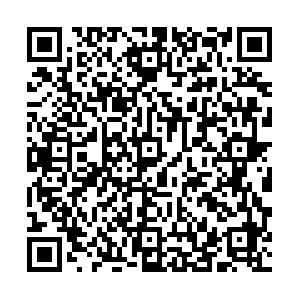PNS Promotes the Wound-healing of Superficial Second-degree Burn Rats by Regulating PDGF-BB/PDGFR-β Expression
-
摘要:
目的 观察三七总皂苷(PNS)对大鼠浅表Ⅱ°烧伤创面的治疗作用及对PDGF-BB/PDGFR-β表达的影响,探讨PNS治疗浅表Ⅱ°烧伤的作用机制。 方法 复制大鼠浅表Ⅱ°烧伤模型,模型复制成功的大鼠用PNS治疗,分别于给药后第0、7、14、21 天活体取材,应用免疫组化(IHC),Western blot和RT-PCR检测烧伤皮肤组织中PDGF-BB/PDGFR-β蛋白和mRNA的表达变化。此外,在不同时间点宏观监测皮肤组织恢复情况。 结果 HE染色提示,模型复制是成功的。宏观监测数据显示,和模型组相比,PNS高剂量组大鼠脱痂、长毛时间均见缩短,创面愈合率提高(P < 0.05)。免疫组化,WB和RT-PCR结果显示,PNS高剂量组的PDGF-BB/PDGFR-β的蛋白和mRNA表达在第7天急剧增加,至第14天持续维持在较高水平,第21天接近正常组水平;而模型组表达高峰出现在烧伤后第21天,PDGF-BB/PDGFR-β表达升高是一个缓慢的过程。 结论 PNS能明显促进大鼠浅表Ⅱ°烧伤模型皮肤创面的愈合,其机制可能与其上调皮肤组织中的PDGF-BB/PDGFR-β的蛋白和mRNA表达密切相关。 -
关键词:
- 三七总皂苷 /
- 大鼠 /
- 浅表Ⅱ°烧伤模型 /
- 血小板源性生长因子/血小板源性生长因子受体
Abstract:Objective To observe the therapeutic of PNS on wound healing and the expression of PDGF-BB, PDGFR-β in rats superficial second-degree burn model, and to explore the underlying mechanism of PNS on second-degree burn wound healing. Methods Rats with superficial second-degree burn were treated with PNS, applying HE staining to detect burn severity, and then biopsied biological tissue on days 0, 7, 14, 21 after administration, respectively. Moreover, Immunohistochemistry (IHC), Western blot and RT-PCR methods were used to detect protein and mRNA expression levels of PDGF-BB/PDGFR-β in skin tissues after treatment with PNS, respectively. Furthermore, the skin wound healing at different time points was monitored by macroscopic observation. Results HE staining suggested that the replication of rats second-degree burn model was successful. Macro monitoring data demonstrates that compared with model group, the removal time of scab and fur-growthing were shortened, and the wound healing rate was increased in the PNS high-dose group (P < 0.05). Combination of IHC, WB and RT-PCR showed that the expression levels of PDGF-BB/PDGFR-β increased sharply on day 7, maintaining a high level until day 14, approaching normal levels on day 21 after PNS treatment. However, the protein and mRNA expressions of PDGF-BB/PDGFR-β showed high values on day 21 in the model group, which was a slow process. Our results suggest that compared with model group, the peak expression of PDGF-BB/PDGFR-β are earlier, shortening of fur-growthing and decrustation time, and improvement of wound healing rate in rats superficial second-degree burn model. Conclusion PNS can significantly promote skin wound healing in rats superficial second-degree burn model, and its mechanism is closely related to the up-regulation of the expression levels of PDGF-BB/PDGFR-β in skin tissue. -
Key words:
- PNS /
- Rats /
- Superficial second-degree burn model /
- PDGF-BB/PDGFR-β
-
图 3 免疫组化检测烧伤创面中PDGF-BB/PDGFR-β蛋白表达的变化(IHC ×400)
A:PNS高剂量组PDGF-BB/PDGFR-β蛋白表达情况;B,C,D,E:其余各实验组皮肤组PDGF-BB/PDGFR-β阳性面积百分比的统计分析。用IPP6.0软件对图片进行分析处理,数据用 $\bar x \pm s$表示,n = 6;与空白对照组比较*P < 0.05,**P < 0.01。空白对照组(Control),病理模型组(Model),三七总皂苷低剂量组(2 g/kg),中剂量组(4 g/kg),高剂量组(8 g/kg)和京万红阳性对照组(JWH)。
Figure 3. IHC assay showing the changes of PDGF-BB/PDGFR-β expression in burn wounds tissue (IHC × 400)
图 4 WB检测大鼠浅表Ⅱ°烧伤皮肤创面愈合PDGF-BB/PDGFR-β的蛋白表达变化
A,B,C,D分别代表烧伤实验第0,7,14,21天时皮肤组织中PDGF-BB/PDGFR-β蛋白表达变化。用ImageJ 1.4.3.67对蛋白条带进行统计分析,β-actin是内参。与空白对照组相比较*P < 0.05,**P < 0.01;与模型组比较#P < 0.05,##P < 0.01,($\bar x \pm s$,n = 6)。a.空白对照组;b.病理模型组;c.三七总皂苷低剂量组(2 g/kg);d.三七总皂苷中剂量组(4 g/kg);e.三七总皂苷高剂量组(8 g/kg);f.京万红阳性对照组。
Figure 4. WB assays showing the changes on expression of PDGF-BB/PDGFR-β in superficial second-degree burn wound healing
图 5 RT-PCR检测大鼠浅表Ⅱ°烧伤皮肤创面愈合中PDGF-BB/PDGFR-β的mRNA表达变化
(A,B,C,D)分别代表烧伤实验第0,7,14,21天时皮肤组织中PDGF-BB/PDGFR-β mRNA的表达变化。与空白对照组相比较,*P < 0.05,**P < 0.01;与模型组比较,#P < 0.05,##P < 0.01,($\bar x \pm s$,n = 6)。
Figure 5. RT-PCR assays showing the changes on mRNA expression of PDGF-BB/PDGFR-β in superficial second-degree burn wound healing
表 1 引物序列
Table 1. Primer sequences
引物 序列(5′-3′) 扩增长度/bp PDGF-BB (Forward)CATCGAGCCAAGACACCTCA 110 (Reverse)AGTGCCTTCTTGTCATGGGT PDGFR-β (Forward)CAAGCCCTCATGTCGGAGTT
(Reverse)TGTTTCGGTGCAGGTAGTCC154 β-actin (Forward)AGGCCAACCGTGAAAAGATG 115 (Reverse)ATGCCAGTGGTACGACCAGA 表 2 不同时间点各组别间愈合率比较[(
$\bar x \pm s$ ),%,(n = 6)]Table 2. Comparison of cure rates among groups at different time points [(
$\bar x \pm s$ ),%,(n = 6)]组别 7 d 14 d 21 d 31 d 模型组 7.56 ± 23.12 56.00 ± 23.12 65.00 ± 4.01 96.00 ± 4.01 京万红组 11.01 ± 26.40 66.10 ± 13.00** 86.1 0 ± 0.90** 99.6 0 ± 0.90** PNS低剂量组 6.80 ± 22.13 58.10 ± 12.14 66.12 ± 1.02 86.12 ± 1.02 PNS中剂量组 7.80 ± 23.12 60.15 ± 14.23* 77.00 ± 0.81* 90.00 ± 0.81* PNS高剂量组 8.26 ± 25.12 65.42 ± 13.22** 87.99 ± 0.52** 99.99 ± 0.52** 与模型组比较,*P < 0.05,**P < 0.01。 表 3 不同组间脱痂和长毛时间差异比较[(
$\bar x \pm s$ ),d]Table 3. Comparison of the differences of decrustation and fur-growing time between different groups [(
$\bar x \pm s$ ),d]组别 n 脱痂时间 长毛时间 模型组 24 22.60 ± 1.21 30.01 ± 2.80 京万红组 24 17.12 ± 1.30** 22.10 ± 2.30** PNS低剂量组 24 19.85 ± 1.02 29.01 ± 3.51 PNS中剂量组 24 18.42 ± 1.25* 24.62 ± 1.52* PNS高剂量组 24 17.31 ± 1.01** 22.54 ± 1.50** 与模型组比较,*P < 0.05,**P < 0.01。 -
[1] Matthew P Rowan,Leopoldo C Cancio,Eric A Elster,et al. Burn wound healing and treatment:review and advancements[J]. Crit Care,2015,6(19):243-251. [2] Xu Y,Tan H Y,Li S,et al. Panax notoginseng for inflammation-related chronic diseases:A review on the modulations of multiple pathways[J]. The American Journal of Chinese Medicine,2018,46(5):1-26. [3] Li Qing-rong,WANG Zi yu. Progress in pharmacological action of panax notoginseng saponins[J]. Hunan Journal of Traditional Chinese Medicine,2017,33(9):216-218. [4] Wang Ting,Guo Ri-xin,Zhou Guo-hong,et al. Traditional uses,botany,phytochemistry,pharmacology and toxicology of Panaxnotoginseng(Burk.)F. H. Chen:Areview[J]. Journal of Ethnopharmacology,2016,88(1):234-258. [5] Yang Zong-cheng. Chinese Burn Surgery [M]. Beijing: People’s Medical Publishing House, 2016: 345-380. [6] Reinke J M,Sorg H. Wound repair and regeneration[J]. Eur Surg Res,2012,49(1):35-43. doi: 10.1159/000339613 [7] Giri P,Ebert S,Braumann U. Skin regeneration in deep second-degree scald injuries either by infusion pumping,or topical application of recombinant human erythropoietin gel[J]. Drug Des Devel Ther,2015,9(3):2565-2579. [8] Fu Ying-ping,Sun Qian-hong,Yang Jan-yu,et al. An experimental research on the treatment of burn rats with PPE compound preparation[J]. Journal of Kunming Medical University,2010,2(6):11-15. [9] Teng Jia,Guo Hui Yang Jan-yu,et al. Experimental research on the treatment of cautery injury in mice by compound preparation[J]. Yunnan Journal of Traditional Chinese Medicine,2009,30(7):57-58. [10] Andrade A L M,Brassolatti P,Luna G F,et al. Effect of photobiomodulation associated with cell therapy in the process of cutaneous regeneration in third degree burns in rats[J]. Tissue Eng Regen Med,2020,14(5):673-683. doi: 10.1002/term.3028 [11] Luo G X. Mechanism and prevention of organ complications post burn injury[J]. Zhong hua Shao Shang Za Zhi,2019,35(8):565-567. [12] Xu C,Wang W,Wang B,et al. Analytical methods and biological activities of Panax notoginseng saponins:Recent trends[J]. J Ethnopharmacol,2019,23(236):443-465. [13] Kimura Y,Sumiyoshi M,Kawahira K,et al. Effects of ginseng saponins isolated from Red Ginseng roots on burn wound healing in mice[J]. British Journal of Pharmacology,2006,148(6):860-70. doi: 10.1038/sj.bjp.0706794 [14] Bayir Y,Un H,Ugan R A,et al. The effects of Beeswax,Olive oil and Butter impregnated bandage on burn wound healing[J]. Burns,2019,45(6):1410-1417. doi: 10.1016/j.burns.2018.03.004 [15] Kondo T,Ishida Y. Molecular pathology of wound healing[J]. Forensic Sci Int,2010,203(3):93-98. [16] Martin P. Wound healing—Aiming for perfect skin regeneration[J]. Science,1997,276(5309):75-81. doi: 10.1126/science.276.5309.75 -






 下载:
下载:










